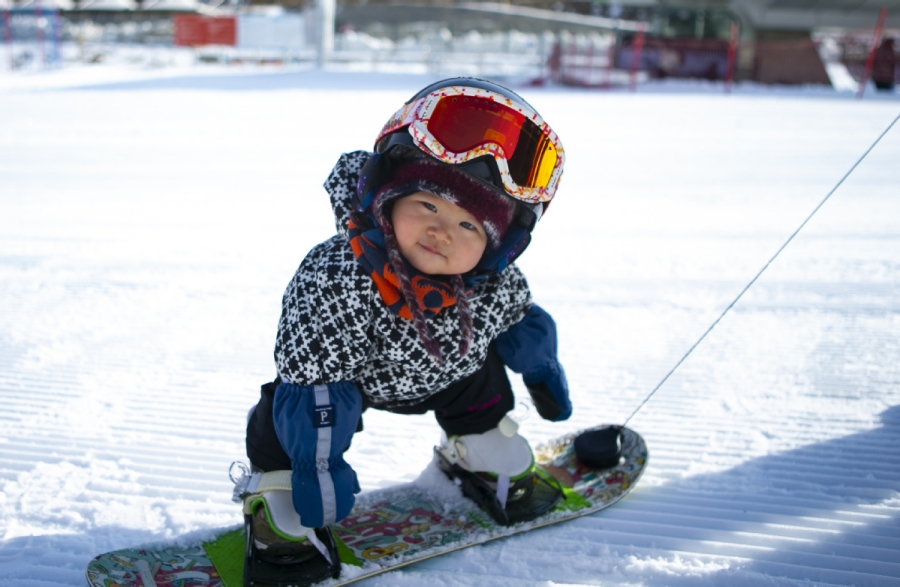Booming interest for ice and snow sports

A toddler enjoys her first attempt at skiing at a ski resort in Zhangjiakou, Hebei province, in November. [Photo/Xinhua]
In December, bookings at some ski resort hotels in Jilin province have exceeded those of the same period of 2019, before the pandemic, according to Qunar, a Beijing-based online travel agency.
Winter sports also have become more popular among residents of South China. More cities there have built indoor ski slopes with machine-made snow. Nationwide, 36 indoor ski resorts have been built in China, and Sunac Snow Park in Guangzhou, Guangdong province, has become the most popular, Qunar said.
Chongqing, Chengdu in Sichuan province and Guangzhou have seen ticket sales surge for their indoor ski resorts. Also, Yulong Snow Mountain in Yunnan province saw ticket sales this winter grow by 40 percent compared with the same period in the winter of 2019, according to Qunar.
All this has fueled the business of skiing equipment makers. A set of equipment for skiing, including a suit, costs about 3,000 to 10,000 yuan ($470 to $1,568) for average skiers. For professional and serious skiers, a whole set could run 60,000 yuan or more, and limited edition equipment can go for even higher prices, according to Beijing-based think tank EqualOcean.
High prices for skiing-related merchandise have boosted the profitability of retailers. Retail profit margins for snowboard and ski suit retailers are usually 40 to 50 percent, and the margins for helmets and goggles can reach 70 percent.
For ski resorts, the profit margin is usually around 15 percent, with ski instruction offering margins of some 30 to 35 percent, according to enterprise intelligence and management information company MobTech.
"In China, most skiers are mid- to high-income male consumers who live in first-tier and second-tier cities. Most of them are aged between 25 and 34, and their monthly income is above 10,000 yuan," said MobTech.
An increasing number of domestic retailers are joining in the bonanza. Chinese sports clothing brands such as Anta Sports Products, Toread Holdings Group and 361 Degrees have come out with their own ski suits. Others are making personal ski equipment, including Running River and Vector.
Beijing-based Carving Ski Group, a major supplier of equipment such as ice and snow makers and lighting systems, said China's ski equipment market is at its initial development stage and manufacturing technologies still need further improvement.
In China, only 1 percent of the population has caught the skiing bug, far lower than the 35 percent in Switzerland, 9 percent in Japan and 8 percent in the United States. That indicates that the sector has significant room for further growth, according to the China Ski Industry Development Report, produced by Carving Ski Group.
Last year, sales revenue from China's ski market reached 83.56 billion yuan, and sales of skiing equipment reached 12.69 billion yuan, according to market research firm Zhiyan Consulting.
























